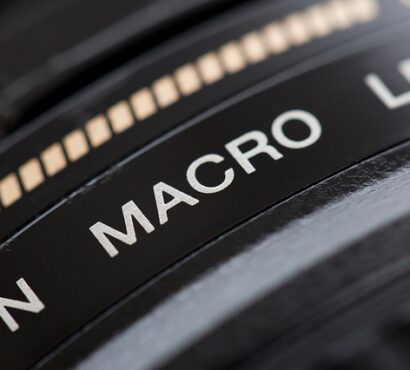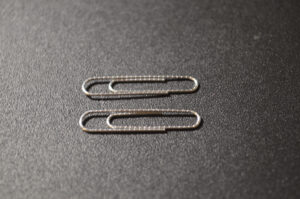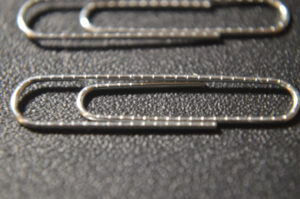What is Macro Photography?

Does size really matter?
One thing that I discovered with Macro Photography, is that it’s all about being small! And small things are what’s important in this form of Photography.
But first off all – is it called Macro Photography? Or should it be called ‘Micro’ Photography?
I don’t know about everyone else – but I get these terms mixed up.
Now I’ve heard of Micro Machines, those small miniature, die-cast size toy airplanes, ships, cars and other vehicles. And as an 80’s child, I even had my die-cast star wars toys, which were bite-sized miniatures form the regular size toys.

From what I understand, the terms macro and micro are interchangeable in this area, with Micro meaning small, while Macro means large.
And when I think about it a bit more, that actually makes sense. I’m taking a small object, and zooming in to make it look larger, or big.

Why not just take a really good close-up of a small object?
This seems like a no-brainer to me. Just grab my DSLR camera, smartphone, or any other point and shoot device, get really close to a small object, be still and focus and just shoot.
Well I discovered that it’s not quite that simple.
Even though I can take a close-up of an images and do the best I can with my settings to make it look as large as possible (using a non-macro lens), the problem here would be with the degree of magnification along with how much fine detail I’m able to capture at this close-up range.

NIKON D3200, Aperture f/5.6, Shutter Speed ½
Using my regular lens, I can only get so close to an object, like the two paper clips below. But when I used my macro lenses, there was a huge, dramatic difference in the details and magnification in comparison.

NIKON D3200, Aperture f/5.6, Shutter Speed ⅝
Now I’m beginning to see not only the huge difference, but the huge potential of learning macro photography going forward. Not only am I starting to think about the potential of different ideas that I can branch out into especially when trying to find your style in photography, but it also opens up a few more options for me in this area.
So what type of equipment do I need?
- Macro Lens
- There are actually different ways to achieve this using the lens that comes with your DLSR camera, or by investing in a Macro lens, or even a Macro lens filter
- Tripod
- A tripod always comes in handy for those shots where you just can’t hold the camera still long enough. Now I didn’t go out and buy the most expensive one out there, but something simple and easy to set up whenever I need it.
- Remote Shutter Release
- I’m just coming to the realization that there are times when just clicking the shutter button on my camera can cause the smallest blur in my images, which is very annoying. That’s why I have this on my personal list.
Toy Photography
As a huge toy fan, this is a personal favorite of mine. Toy photography is a new that has been growing in the past few year among all types of photographers – from professional to ametuers to hobbyists, using images from Star Wars to different variety of action figures and everyday objects

Food Photography
Perhaps I’ve made a mistake here. I understand that there’s a separate category that is just “Food Photography” and I’ve seen plenty of these images on Instagram and Facebook, from friends checking in at Applebees, relatives posting their great aunt’s prune cobbler recipe, to professional photographers taking the most dazzling images of food images for food networks and magazines.
But I’ve also seen various close-ups of food, delicatessen and Hors d’oeuvre and I’m starting to wonder, is there a niche for food in this area? How else can they get the finer tasting details of some of these fruits and vegetables?

Nature and Wildlife
This is another neat are that I think of when it comes to this area of photography – those neat, life-size images of ants, locusts, and other insects. This definitely takes me back to those old “nuclear monster” films from the 1950’s (not that I’m THAT old) like “Them!” about gigantic irradiates ants that attack the city of Los Angelas.
Now I wouldn’t immediately start evacuating Los Angelas today and calling in the National Guard to handle these critters below. But I will say that macro photography also provides the opportunity to capture some spectacular, wildlife images that I can take right from my own backyard or local park!

And I can’t forget about nature photography as well. Now I’ve attempted to capture some decent images of various plants and flowers along the way as a photographer, but not on this level of detail.

Abstract and Minimalism
It also opens the doors to other possibilities. There appears to be no limit as to what’s possible. When you think about it, there’s potential in any object around you, whether it’s in your home, your backyard, outdoors, or anywhere – as long as there’s a surface, it can be photographed.
How about trying some form of abstract photography, with the right angle of lighting? Or just trying something new to come up with a possible background that can be manipulated in Photoshop?

What about minimalism? Exploring the micro world around me can bring out even more interesting ideas in all forms, like a simple crack in the wall.

My Takeaway
From what I’ve been researching and walking through, learning the proper techniques for Macro Photography has a lot of potential- not only just for branching off into another area of photography, but especially those times when I may be searching for some new ideas as well.
What do you think about Macro Photography? If you’re a photographer, is this a style that you shoot regularly? If so, I’d be interested to hear from you!
Thanks!


POST YOUR COMMENTS